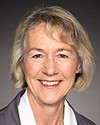I think Dr. Bennett is absolutely right. We don't need to re-invent the wheel on this.
Gail and I were recently at the European organization for rare disorders conference. There were 3,000 persons there and every country was represented.
People are putting together national plans to do this, and there is every opportunity for Canada to be a partner at that table, to actually follow the models that are being put together for national plans and look at the pillars they've already identified.
They've put out guidelines in the European Union for how countries should structure their plans. There are a dozen different models, so there's no one-size-fits-all. But there are blueprints to help you identify them.
First and foremost is what Peter talked about, and that is that we need that regulatory framework. It speaks to what Dr. Brenders and Dr. Bennett are saying. We have to modernize our Canada Health Act and the way in which Health Canada works so that we can take advantage of what is being put in place in other countries to deal with modern medicine.
The Canada Health Act is 50 years old, and in many respects, even the regulators can't do what they want to do. This is a tragedy because it results in all the kinds of inefficiencies we're talking about, unnecessary suffering, and people not getting treatment. As you say, it's difficult for companies to come to Canada to set up shop, do their clinical trials, or make these therapies available to people.
So you're absolutely right. First and foremost, we have to do the regulatory framework. I would say that in Canada we're a hair's breadth away from getting it. There are some draft regulatory pieces that have been put together. We have provided input on them to Health Canada. We know we're very close. It really needs the parliamentarians to say, “Yes, do it.” It needs this health committee to turn to the minister and the rest of Parliament and say we need to do this.
We believe that patients with rare disorders are different; therefore, we have to approach the problem differently. We have the models for how to do it. At the end of the day, it doesn't cost any more. As Maureen says very clearly, it can cost us a whole lot less and make it so much better for people if we do it right. The good news in being so far behind the rest of the world is that we can learn not only from other people's experiences, but we can take the best of the plans. I think we've got a lot of good blueprints.
As Dr. Bennett said, in many other countries, patients, researchers, clinicians, and the regulators are at the table to provide input into design of the clinical trials, the review of that information, and even on the next step in terms of how to make them available and accessible to patients.
Dr. Bennett said the solution that we had for Fabry's disease--that you had for Fabry's disease--was not the only model, but it was a very good model of how the feds, the provinces, and the territories can work together. I will wager that the feds played a leading role in making that happen, and I think we can.
So the blueprints are there. All of the things we need to do are there, and what you're hearing as to one specific disorder is exactly the case. This is the problem in many other aspects we get with all of the rare disorders, and we believe it as well. If we can fix this problem for rare disorders, we can do a heck of a lot better for many common disorders. We can get ourselves into a position of being one of the leading countries, because we're very close. We have lots of good stuff going on in the background. It's up to the committee and Parliament to make it happen.






